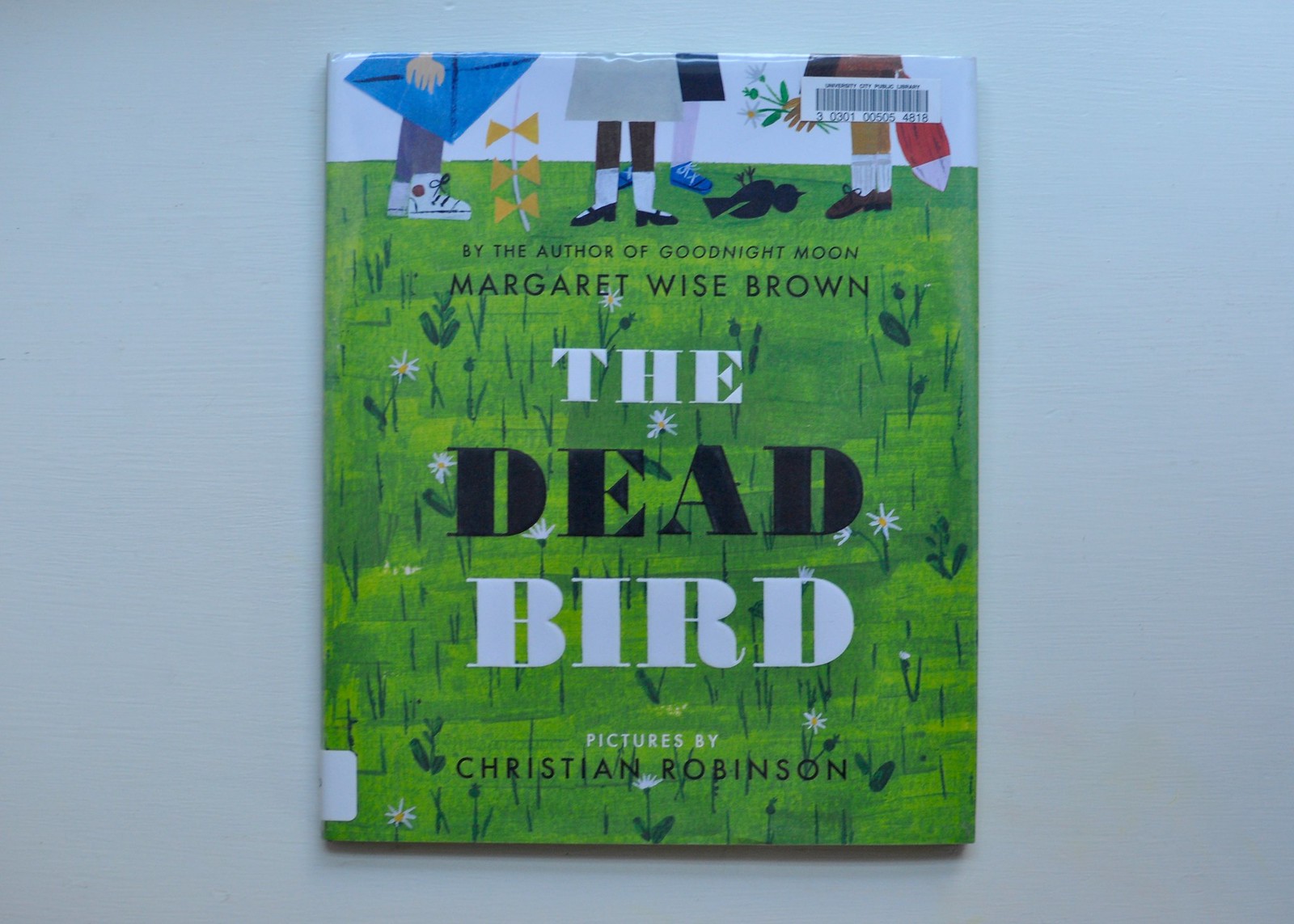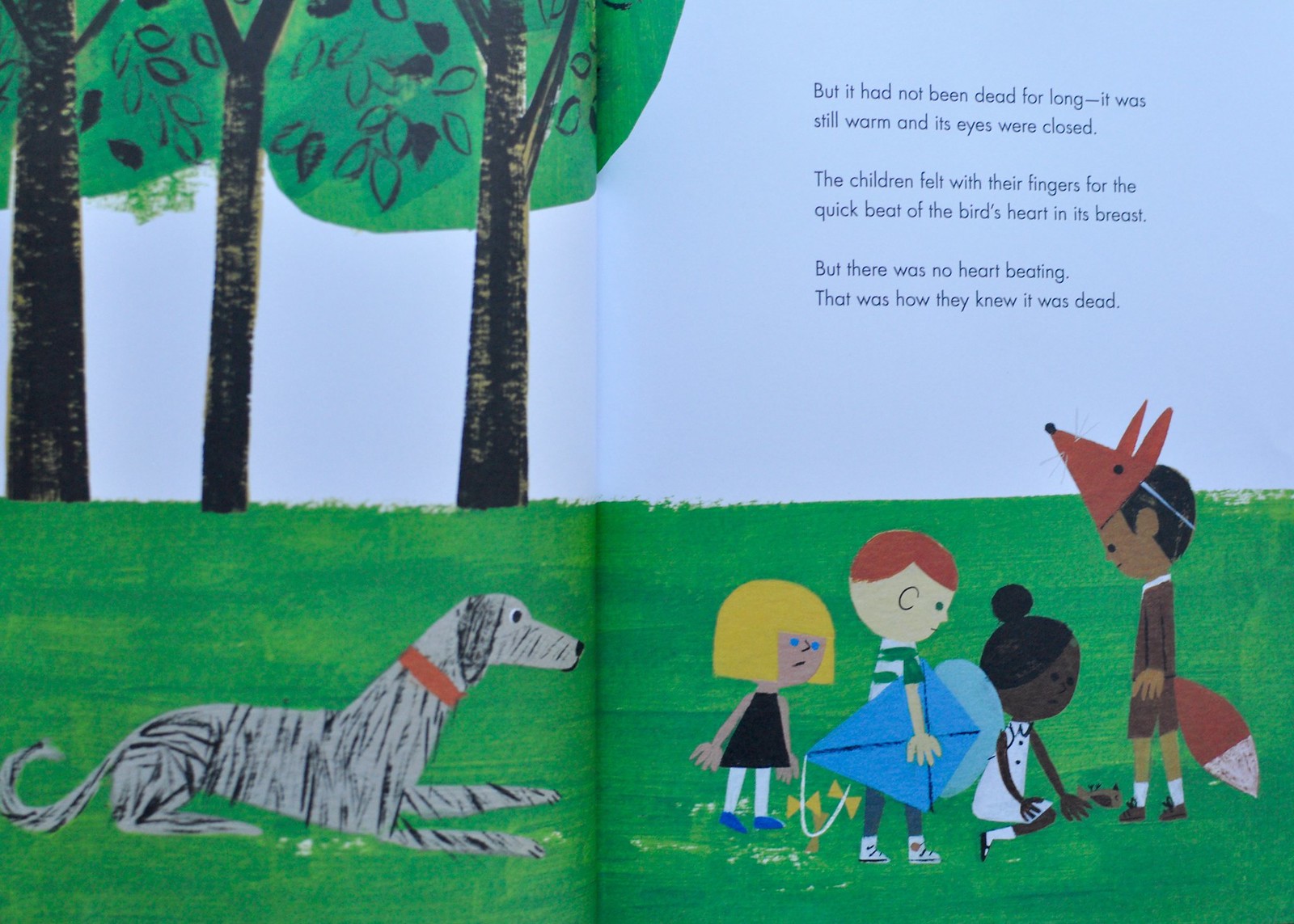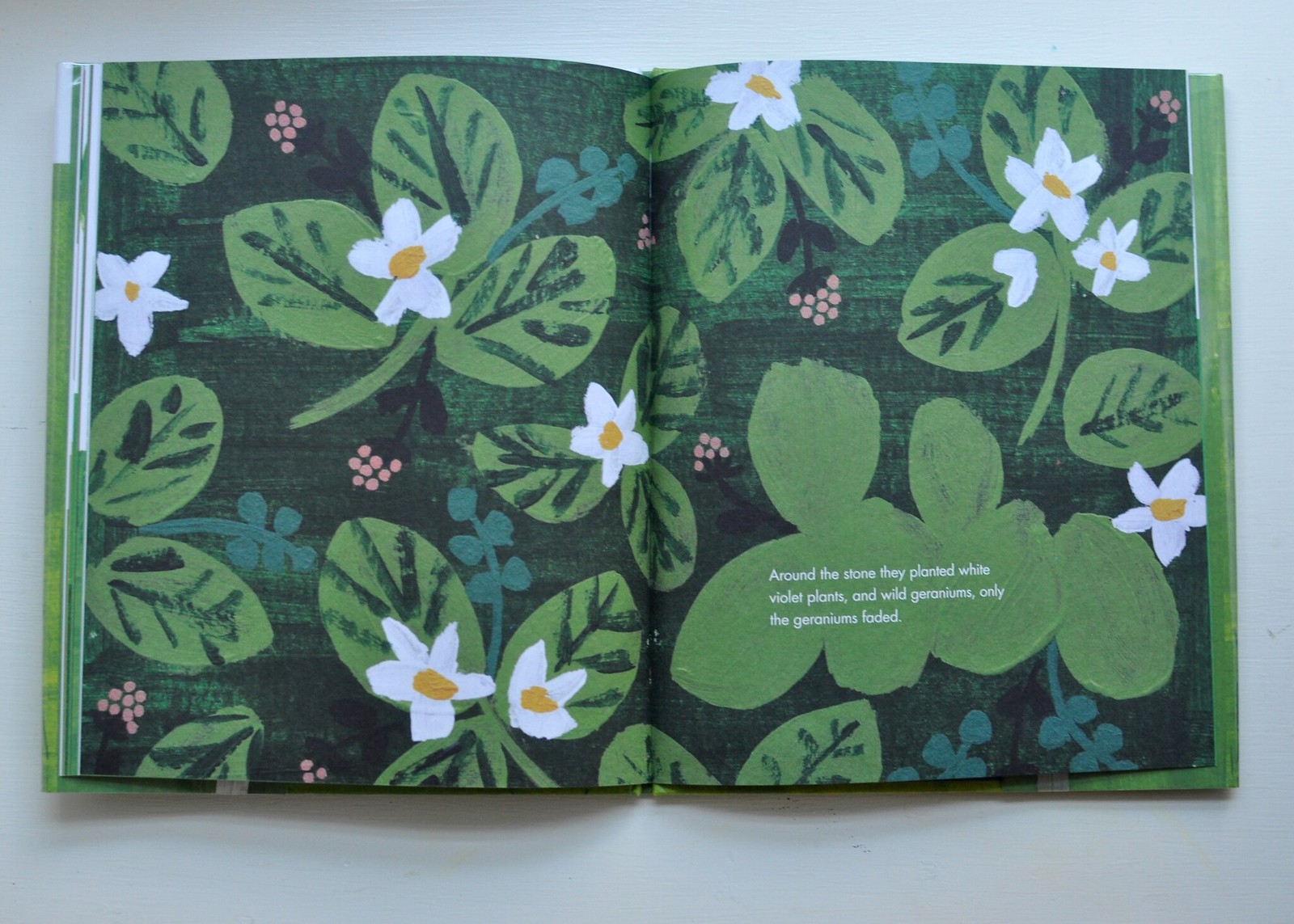The Dead Bird, by Margaret Wise Brown
We recently checked out this book from the library and were delighted to find a simple, timeless, story from a child’s perspective about death. I was surprised to find out that Brown’s original text copyright was from 1938, and that the book has been reissued in 2016 (with beautiful illustrations by Christian Robinson)– surprised because the book is still so relevant. Death, after all, is the end point of it all, no matter what year you find yourself living in.
The story is short and not at all wordy or grand. It is a simple experience told in simple words:
The bird was dead when the children found it.
But it had not been dead for long — it was
still warm and its eyes were closed.
The children felt with their fingers for the
quick beat of the bird’s heart in its breast.
But there was no heart beating.
That was how they knew it was dead.
The story to follow is predictable: the carrying and gentle burial, the small funeral and singing (just like grown ups do when someone has died), the placement of a memorial stone, the planting of flowers, and eventually, the moving on, which happens quickly, as is the nature of experiencing death as a child with something or someone he has not known well.
As I often do before writing about books here, I read some reviews of this book online. I find that doing this gives me fresh perspective and ideas of what others might or might not like about each read. Sometimes I am surprised by what people get hung up on! I found it strange that so much of what was written about this book was disgust about the children picking up the dead bird and carrying it around in their hands. That reaction is funny to me because it never occurred to me to focus on that part of the story. Don’t children experience the world this way? I certainly did. Yes, they carried a recently-deceased bird into the woods in their bare hands, then they probably dug the little grave with their bare hands, picked and planted the flowers with their bare hands, wiped their tears with their bare hands, and so on. And the focus or preoccupation with that is disappointing to me because it completely misses the point of this beautiful story.
This book is not about germs; it’s about the finality of death from a child’s perspective. The physical part of death is how they know death. And it is also about what children (and adults) don’t know about death. Leave out the religion, the philosophy, and you are left with the mystery: that death is known but not understood. To a child, this book makes perfect sense. I loved it, and Emil has asked to read it every day since we checked it out. I’m adding it to our holiday book list.






